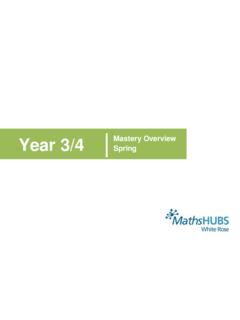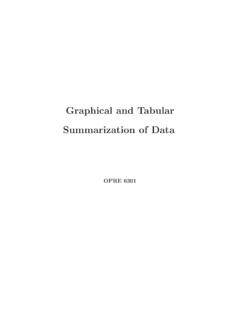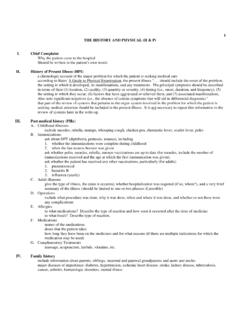Transcription of VI Mathematics Practice Paper - Brilliant Public …
1 Brilliant Public School , Sitamarhi VI Mathematics Practice Paper Session : 2012-13 Rajopatti,Dumra Road,Sitamarhi(Bihar),Pin-843301 ,Mobile:9431636758 Chapter 1 Knowing our Numbers2L 2 Whole Numbers3L 3 Playing with Numbers4L 4 Basic Geometrical Ideas 5L 5 Understanding Elementary Shapes6L 6 Integers7L 7 Fractions8L 8 Decimals9L 9 Data Handling10L 10 Mensuration11L 11 Algebra12L 12 Ratio and Proportion 13L 13 Symmetry14L 14 Practical Text Book ChaptersRevision of what a fraction is, Fraction as a part of whole, Representation of fractions (pictorially and on number line)
2 , fraction as a division, proper, improper & mixed fractions, equivalent fractions, comparison of fractions, addition and subtraction of fractions (Avoid large and complicated unnecessary tasks). (Moving towards abstraction in fractions)Review of the idea of a decimal fraction, place value in the context of decimal fraction, inter conversion of fractions and decimal fractions (avoid recurring decimals at this stage), word problems involving addition and subtraction of decimals (two operations together on money, mass, length and temperature) Introduction to variable through patterns and through appropriate word problems and generalisations (example 5 X 1 = 5 etc.)
3 Generate such patterns with more examples. Introduction to unknowns through examples with simple contexts (single perations) Concept of Ratio Proportion as equality of two ratios Unitary method (with only direct variation implied) Word problemsIntroduction to geometry. Its linkage with and reflection in everyday experience. Line, line segment, ray. Open and closed figures. Interior and exterior of closed figures. Curvilinear and linear boundaries Angle Vertex, arm, interior and exterior, Triangle vertices, sides, angles, interior and exterior, altitude and median Quadrilateral Sides, vertices, angles, diagonals, adjacent sides and opposite sides (only convex quadrilateral are to be discussed), interior and exterior of a (65 hrs)(i) Basic geometrical ideas (2 -D).
4 (15 hrs)INTRODUCTION TO ALGEBRAR atio and Proportion(15 hrs)(iv) Negative Numbers and IntergersHow negative numbers arise, models of negative numbers, connection to daily life, ordering of negative numbers, representation of negative numbers on number line. Children to see (v) Fractions:Algebra(ii) Playing with Numbers:Simplification of brackets, Multiples and factors, divisibility rule of 2, 3, 4, 5, 6, 8, 9, 10, 11. (All these through observing patterns. Children would be helped in deducing some and then (iii) Whole numbersNatural numbers, whole numbers, properties of numbers (commutative, associative, distributive, additive identity, multiplicative identity), number line.)
5 Seeing patterns, Brilliant Public SCHOOL,SITAMARHI-843301 Maths Course Structure - Class VI Number System(60 hrs)(i) Knowing our Numbers:Consolidating the sense of numberness up to 5 digits, Size, estimation of numbers, identifying smaller, larger, etc. Place value (recapitulation and extension), connectives: use Circle Centre, radius, diameter, arc, sector, chord, segment, semicircle, circumference, interior and exterior. Measure of Line segment Measure of angles Pair of lines- Intersecting and perpendicular lines- Parallel lines Types of angles- acute, obtuse, right, straight, reflex, complete and zero angle Classification of triangles (on the basis of sides, and of angles) Types of quadrilaterals Trapezium, parallelogram, rectangle, square, rhombus.
6 Simple polygons (introduction) (Upto octagons regulars as well as non regular). Identification of 3-D shapes: Cubes, Cuboids, cylinder, sphere, cone,prism (triangular), pyramid (triangular and square)Identification and locating in the surroundings Elements of 3-D figures. (Faces, Edges and vertices) Nets for cube, cuboids, cylinders, cones and tetrahedrons. Observation and identification of 2-D symmetrical objects for reflection symmetry Operation of reflection (taking mirror images) of simple 2-D objects Recognising reflection symmetry (identifying axes) Drawing of a line segment Construction of circle Perpendicular bisector Construction of angles (using protractor) Angle 60o, 120o (Using Compasses) Angle bisector- making angles of 30o, 45o, 90o etc.
7 (using compasses) Angle equal to a given angle (using compass) Drawing a line perpendicular to a given line from a point a) on the line b) outside the and generalunderstanding of perimeter using many shapes. Shapes of different kinds with the same perimeter. Concept of area, Area of arectangle and a square Counter examples to different misconcepts related to perimeter and area. Perimeter of a rectangle andits special case a square. Deducing the formula of the perimeter for a rectangle and then a square through pattern and generalisation.(i) What is data - choosing data to examine a hypothesis?
8 (ii) Collection and organisation of data - examples of organising it in tally bars and a table.(iii) Pictograph- Need for scaling in pictographs interpretation & construction.(iv) Making bar graphs for given data interpreting bar graphs+.CONCEPT OF PERIMETER AND INTRODUCTION TO AREAData handling(10 hrs)(iii) symmetry : (reflection)(iv) Constructions (using Straight edge Scale, protractor, compasses)Mensuration(15 hrs)(ii) Understanding Elementary Shapes (2-D and 3-D):No. ofTentativeChapter Class RoomTotal workingNo. ofDaysPeriodsPeriodsApril232511. Knowing our Numbers13 And2922.
9 Whole Numbers12 May44 June7833. Playing with Numbers15 And25(19+6)3044. Basic Geometrical Ideas11 July2255. Understanding Elementary Shapes1166. Integers1122(16+6)77. Fractions988. Decimals7 October182099. Data Handing152223(17+6)10. Mensuration20 Cumulative TestRevision for Half Yearly (18+6)1212. Ratio and Proportion1313. SymmetryPractical Geometry10 Revision for Revision for Algebra20 September1818 November2210222930 August252626 Brilliant Public SCHOOL,SITAMARHI-843301 MONTHLY SPLIT UP OF SYLLABUSM onthName of the ChapterCLASS VI MATHEMATICSS ession.
10 2012-13 Brilliant Public SCHOOL,SITAMARHI-843301 Maths Lesson Summary - Class VIKnowing Our NumbersComparing NumbersThe arrangements of numbers from the smallest to the greatest is called ascending arrangement of numbers from the greatest to the smallest is called descending two numbers have unequal number of digits, then the number with the greater number of digits is two numbers have equal number of digits, then the number with the greater digit is added to numbers help us read and write large numbers easily. As per Indian Numeration, the first comma is placed after hundreds place, then commas are placed after every two digits.






